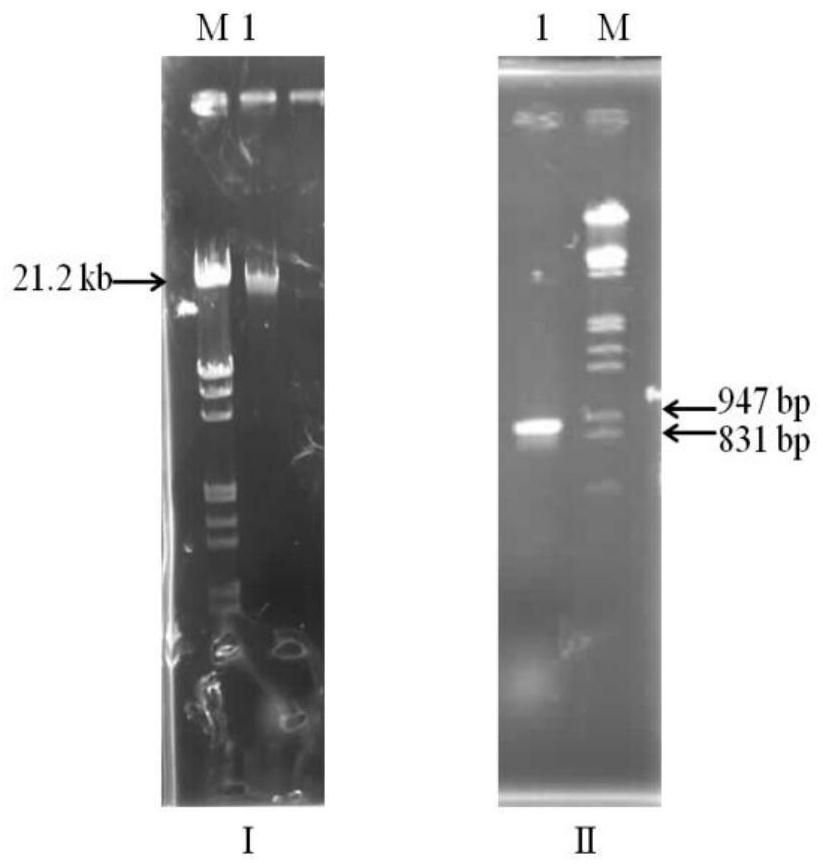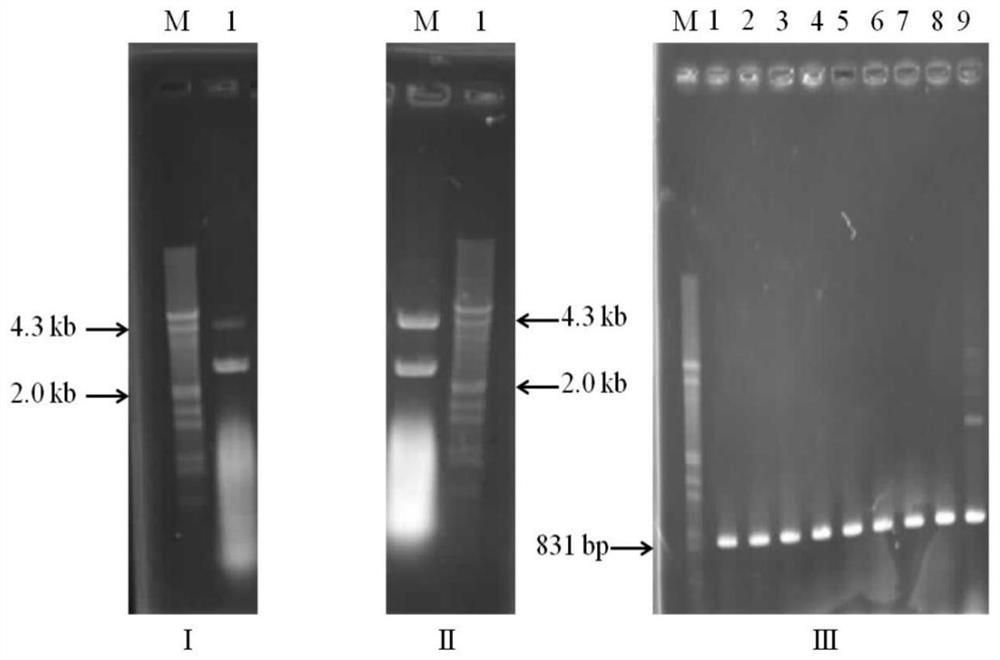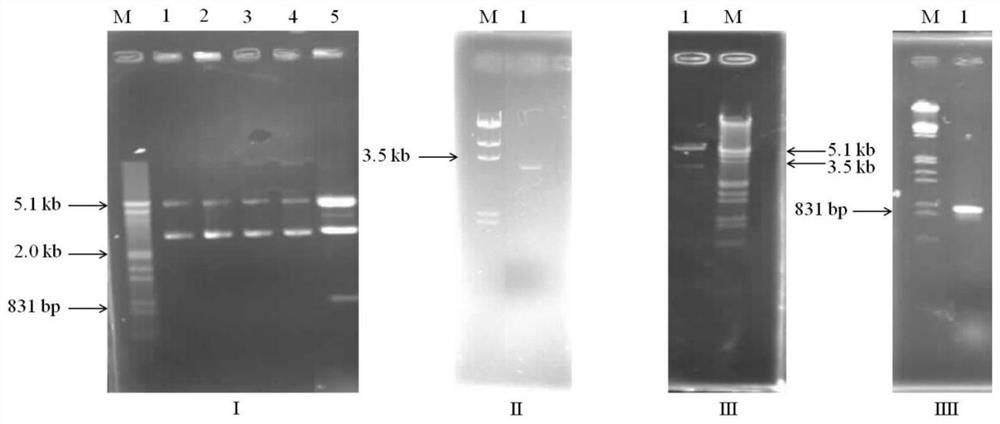Catechol 1, 2-dioxygenase as well as coding group, preparation method and application thereof
A dioxygenase and catechol technology, applied in the biological field, can solve the problems of high enzyme production and limited application of enzyme preparations, and achieve the effect of overcoming poor environmental adaptability and improving microbial degradation rate
- Summary
- Abstract
- Description
- Claims
- Application Information
AI Technical Summary
Problems solved by technology
Method used
Image
Examples
Embodiment 1
[0051] This embodiment provides the extraction of the genomic DNA of Arthrobacter sp.FB24 and the specific amplification of the catechol 1,2-dioxygenase encoding gene sequence, as follows:
[0052] (1) Extraction of genomic DNA from Arthrobacter sp.FB24
[0053] Arthrobacter sp. FB24 strain was inoculated into liquid LB medium, cultured overnight at 37°C with shaking, and the cells were collected by centrifugation at 8000 r / min. The genome was extracted using the Omega genome kit E.Z.N.A. Bacterial DNA Kit, and the specific extraction steps were carried out according to the instructions of the kit.
[0054] (2) PCR amplification of the gene encoding catechol 1,2-dioxygenase
[0055] According to the coding gene sequence of catechol 1,2-dioxygenase (the nucleotide sequence of which is shown in SEQ ID NO. 1 of the sequence table), a gene amplification carrying restriction enzyme sites EcoR I and Hind III was designed and synthesized. Increase primer, upstream primer ArcatF: 5'...
Embodiment 2
[0058] This embodiment provides a method for constructing a cloned strain containing a gene encoding catechol 1,2-dioxygenase, specifically including:
[0059] (1) Enzyme cleavage reaction
[0060] The PCR product and plasmid pMD19T amplified in Example 1 were double digested with EcoR I and Hind III. The digestion system was as follows: 1 μL EcoR I, 1 μL Hind III, 5 μL 10×buffer, vector or PCR product 500 ng; ddH 2 Make up to 50 μL with O. The above system was reacted at 37 °C for 6 h to obtain the corresponding enzyme cleavage product.
[0061] (2) Construction of recombinant cloning plasmid pMD19T-Arcat
[0062] The PCR product that was double digested with EcoR I and Hind III was ligated to the pM D19T vector that was also double digested. The 10 μL ligation system was as follows: 1 μL pMD19T, 5 μL PCR product, 1 μL 10×Ligase buffer, 1 μL T4 DNALigase, 2 μL ddH 2 O, mix well, take out in a warm bath at 16°C for 16-20h, directly transform or store at -20°C to obtain the ...
Embodiment 3
[0066] This embodiment provides a method for constructing a catechol 1,2-dioxygenase-encoding gene expression strain, which specifically includes:
[0067] (1) Enzyme cleavage reaction
[0068] The recombinant cloning plasmid pMD19T-Arcat was extracted from the cloned strain, and the recombinant cloning plasmid pMD19T-Arcat and plasmid pET28a were double digested with EcoR I and Hind III. The digestion system was as follows: 1 μL Eco R I, 1 μL Hind III, 5 μL 10×buffer , vector or recombinant cloning plasmid pMD19T-Arcat 500ng; ddH 2 Make up to 50 μL with O. The above system was reacted at 37°C for 6 h to obtain the Arcat gene fragment.
[0069] (2) Construction of recombinant expression plasmid pET28a-Arcat
[0070] The Arcat gene fragment that had been double digested with EcoR I and Hind III was ligated to the pET28a vector that had also been double digested. The 10 μL ligation system was as follows: 1 μL pET28a, 5 μL Arcat gene fragment, 1 μL 10×Ligasebuffer, 1 μL T4 DNA...
PUM
 Login to View More
Login to View More Abstract
Description
Claims
Application Information
 Login to View More
Login to View More - R&D
- Intellectual Property
- Life Sciences
- Materials
- Tech Scout
- Unparalleled Data Quality
- Higher Quality Content
- 60% Fewer Hallucinations
Browse by: Latest US Patents, China's latest patents, Technical Efficacy Thesaurus, Application Domain, Technology Topic, Popular Technical Reports.
© 2025 PatSnap. All rights reserved.Legal|Privacy policy|Modern Slavery Act Transparency Statement|Sitemap|About US| Contact US: help@patsnap.com



